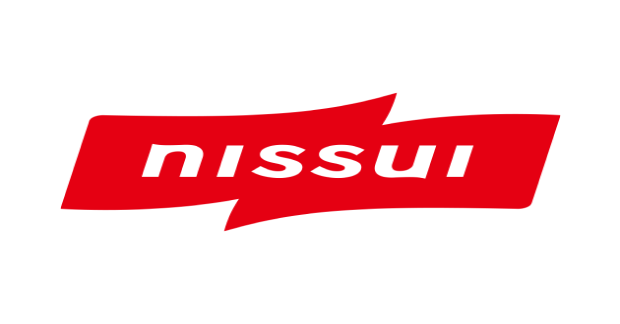Market Size of shrimp Industry
|
|
Study Period | 2017 - 2029 |
|
|
Market Size (2024) | USD 125.4 Billion |
|
|
Market Size (2029) | USD 134.8 Billion |
|
|
Largest Share by Distribution Channel | On-Trade |
|
|
CAGR (2024 - 2029) | 1.46 % |
|
|
Largest Share by Region | Asia-Pacific |
Major Players |
||

|
||
|
*Disclaimer: Major Players sorted in no particular order |
Shrimp Market Analysis
The Shrimp Market size is estimated at 125.4 billion USD in 2024, and is expected to reach 134.8 billion USD by 2029, growing at a CAGR of 1.46% during the forecast period (2024-2029).
125.4 Billion
Market Size in 2024 (USD)
134.8 Billion
Market Size in 2029 (USD)
2.51 %
CAGR (2017-2023)
1.46 %
CAGR (2024-2029)
Largest Segment by Region
73.33 %
value share, Asia-Pacific, 2023

Asia-Pacific largely produces shrimps, mainly in countries like India, Thailand, and China, which supports its easy supply in the region, leading to higher consumption.
Largest Segment by Form
58.58 %
value share, Frozen, 2023
Lower prices of frozen shrimp relative to fresh shrimp are the key reason for its demand. Canned shrimp is popular on online channels due to its ease of shipping.
Fastest-growing Segment by Region
4.22 %
Projected CAGR, Africa, 2024-2029
The growth in regional sales is due to the expansion of existing shrimp farms, production increase, falling shrimp prices, and the introduction of shrimp to a new audience.
Fastest-growing Segment by Form
2.05 %
Projected CAGR, Fresh / Chilled, 2024-2029
Changing dietary habits and preferences across regions contributed to the demand for seafood, thus, the demand for fresh forms of high quality has grown.
Leading Market Player
0.68 %
market share, Nippon Suisan Kaisha Ltd, 2022

The company's expertise in fisheries, fish farming, marine research and development, production, logistics, and marketing, drives its sales, making it the market leader.
The foodservice industry is expected to drive the market
- The on-trade channel accounted for a significant share in 2022. Shrimp sales witnessed a Y-o-Y growth of 2.07% by value from 2021 to 2022. The increase in the frequency of dining out boosted the market's growth globally. For instance, around 70% of the population in countries like the United States, China, Malaysia, and India dined out to consume seafood in 2022. Another major factor that drove the sales of shrimp globally was the increase in disposable incomes. The rise in the number of foodservice establishments, such as food trucks, quick-service restaurants, and full-service restaurants, and the emerging trend of cloud kitchens also boosted the sales of shrimp through the on-trade channel.
- The off-trade channel is anticipated to register the fastest growth during the forecast period, with a CAGR of 2.76% by value. Among all off-trade channels, supermarkets and hypermarkets accounted for a share of more than 61.02% in 2022. Consumers switched to private-label brands instead of national brands, which offer more varieties of shrimp products, such as South American white shrimp, Asian white shrimp, and breaded shrimp products. Private-label brands are able to attract consumers with a wide range of shrimp products, such as peeled shrimp, processed shrimp, and shell-on shrimp.
- The online channel is projected to be the fastest-growing channel, registering a CAGR of 5.10% during the forecast period. Major online stores like Amazon, Walmart, The Kroger Co., and others have launched more products with ASC certification. Around 46% of consumers made online purchases for groceries in 2021. The increase in the adoption of e-commerce is expected to favor the growth of the market.
Shrimp imports are increasing in the Western markets and Japan
- The cost of aquaculture inputs (feed, fuel, and transportation) increased significantly in 2022, causing difficulties for shrimp farmers worldwide. Nevertheless, production and export of farmed shrimp in Asia were moderate in 2022. In terms of species, vannamei shrimp dominated the supply. From January to June 2022, the cumulative shrimp imports to the top five markets were 1.36 million tons, up by 13% from the same period last year. Imports of semi-processed (peeled shrimp) and processed shrimp (breaded and others) increased in Western markets and Japan during this period, mainly from Vietnam, Thailand, Indonesia, and China.
- Asia-Pacific dominates the shrimp market, with a 41% higher market share than North America and a 41.5% higher market share than Europe. This is mainly due to its population, as around 59% of the global population lives in Asia. More countries are producing shrimp, such as India, Thailand, China, and others, which account for around 58% of global production, and 49% of the shrimp produced is consumed locally. The rest is exported to other countries like the United States for premium prices.
- South America is likely to be the fastest-growing shrimp market. It is expected to record a CAGR of 3.77% by value during the forecast period. The country is known for the premium quality and prices of its shrimp. The increase in investments and demand for premium shrimp is expected to drive the market. Brazilian shrimp producers were targeting 20% growth through 2023, helped by an explosion of small-scale producers in the northeast of the country. Achieving this target would boost production to 180,000 tons and allow new and existing producers to capitalize on domestic demand as consumers sought variety in their diets.
Shrimp Industry Segmentation
Canned, Fresh / Chilled, Frozen, Processed are covered as segments by Form. Off-Trade, On-Trade are covered as segments by Distribution Channel. Africa, Asia-Pacific, Europe, Middle East, North America, South America are covered as segments by Region.
- The on-trade channel accounted for a significant share in 2022. Shrimp sales witnessed a Y-o-Y growth of 2.07% by value from 2021 to 2022. The increase in the frequency of dining out boosted the market's growth globally. For instance, around 70% of the population in countries like the United States, China, Malaysia, and India dined out to consume seafood in 2022. Another major factor that drove the sales of shrimp globally was the increase in disposable incomes. The rise in the number of foodservice establishments, such as food trucks, quick-service restaurants, and full-service restaurants, and the emerging trend of cloud kitchens also boosted the sales of shrimp through the on-trade channel.
- The off-trade channel is anticipated to register the fastest growth during the forecast period, with a CAGR of 2.76% by value. Among all off-trade channels, supermarkets and hypermarkets accounted for a share of more than 61.02% in 2022. Consumers switched to private-label brands instead of national brands, which offer more varieties of shrimp products, such as South American white shrimp, Asian white shrimp, and breaded shrimp products. Private-label brands are able to attract consumers with a wide range of shrimp products, such as peeled shrimp, processed shrimp, and shell-on shrimp.
- The online channel is projected to be the fastest-growing channel, registering a CAGR of 5.10% during the forecast period. Major online stores like Amazon, Walmart, The Kroger Co., and others have launched more products with ASC certification. Around 46% of consumers made online purchases for groceries in 2021. The increase in the adoption of e-commerce is expected to favor the growth of the market.
| Form | |
| Canned | |
| Fresh / Chilled | |
| Frozen | |
| Processed |
| Distribution Channel | ||||||
| ||||||
| On-Trade |
| Region | ||||||||||||||
| ||||||||||||||
| ||||||||||||||
| ||||||||||||||
| ||||||||||||||
| ||||||||||||||
|
Shrimp Market Size Summary
The shrimp market is experiencing a steady growth trajectory, driven by increasing consumer demand and evolving market dynamics. The on-trade channel, including restaurants and foodservice establishments, has been a significant contributor to this growth, fueled by a rise in dining out and higher disposable incomes. The off-trade channel, particularly supermarkets and hypermarkets, is also expanding rapidly, with consumers increasingly opting for private-label brands that offer a diverse range of shrimp products. The online sales channel is projected to grow the fastest, supported by the rising adoption of e-commerce and the availability of certified products on major platforms. Despite challenges such as rising aquaculture input costs and environmental issues, the market continues to expand, with Asia-Pacific leading in production and consumption.
Globally, the shrimp market is characterized by a fragmented landscape with key players holding a small share of the market. The Asia-Pacific region dominates production, accounting for a significant portion of the global supply, while South America is emerging as a fast-growing market due to its premium quality shrimp. The market is also witnessing shifts in consumer preferences and supply chain dynamics, with increased imports of semi-processed and processed shrimp in Western markets. High freight costs and logistical challenges have impacted pricing, but demand remains robust, particularly in Europe and the United States. The market's growth is further supported by strategic initiatives from major companies, such as product launches and environmental sustainability efforts, aiming to meet the evolving consumer demands and regulatory standards.
Shrimp Market Size - Table of Contents
-
1. MARKET SEGMENTATION (includes market size in Value in USD, Forecasts up to 2029 and analysis of growth prospects)
-
1.1 Form
-
1.1.1 Canned
-
1.1.2 Fresh / Chilled
-
1.1.3 Frozen
-
1.1.4 Processed
-
-
1.2 Distribution Channel
-
1.2.1 Off-Trade
-
1.2.1.1 Convenience Stores
-
1.2.1.2 Online Channel
-
1.2.1.3 Supermarkets and Hypermarkets
-
1.2.1.4 Others
-
-
1.2.2 On-Trade
-
-
1.3 Region
-
1.3.1 Africa
-
1.3.1.1 By Form
-
1.3.1.2 By Distribution Channel
-
1.3.1.3 By Country
-
1.3.1.3.1 Egypt
-
1.3.1.3.2 Nigeria
-
1.3.1.3.3 South Africa
-
1.3.1.3.4 Rest of Africa
-
-
-
1.3.2 Asia-Pacific
-
1.3.2.1 By Form
-
1.3.2.2 By Distribution Channel
-
1.3.2.3 By Country
-
1.3.2.3.1 Australia
-
1.3.2.3.2 China
-
1.3.2.3.3 India
-
1.3.2.3.4 Indonesia
-
1.3.2.3.5 Japan
-
1.3.2.3.6 Malaysia
-
1.3.2.3.7 South Korea
-
1.3.2.3.8 Rest of Asia-Pacific
-
-
-
1.3.3 Europe
-
1.3.3.1 By Form
-
1.3.3.2 By Distribution Channel
-
1.3.3.3 By Country
-
1.3.3.3.1 France
-
1.3.3.3.2 Germany
-
1.3.3.3.3 Italy
-
1.3.3.3.4 Netherlands
-
1.3.3.3.5 Russia
-
1.3.3.3.6 Spain
-
1.3.3.3.7 United Kingdom
-
1.3.3.3.8 Rest of Europe
-
-
-
1.3.4 Middle East
-
1.3.4.1 By Form
-
1.3.4.2 By Distribution Channel
-
1.3.4.3 By Country
-
1.3.4.3.1 Bahrain
-
1.3.4.3.2 Kuwait
-
1.3.4.3.3 Oman
-
1.3.4.3.4 Qatar
-
1.3.4.3.5 Saudi Arabia
-
1.3.4.3.6 United Arab Emirates
-
1.3.4.3.7 Rest of Middle East
-
-
-
1.3.5 North America
-
1.3.5.1 By Form
-
1.3.5.2 By Distribution Channel
-
1.3.5.3 By Country
-
1.3.5.3.1 Canada
-
1.3.5.3.2 Mexico
-
1.3.5.3.3 United States
-
1.3.5.3.4 Rest of North America
-
-
-
1.3.6 South America
-
1.3.6.1 By Form
-
1.3.6.2 By Distribution Channel
-
1.3.6.3 By Country
-
1.3.6.3.1 Argentina
-
1.3.6.3.2 Brazil
-
1.3.6.3.3 Rest of South America
-
-
-
-
Shrimp Market Size FAQs
How big is the Global Shrimp Market?
The Global Shrimp Market size is expected to reach USD 125.40 billion in 2024 and grow at a CAGR of 1.46% to reach USD 134.80 billion by 2029.
What is the current Global Shrimp Market size?
In 2024, the Global Shrimp Market size is expected to reach USD 125.40 billion.

